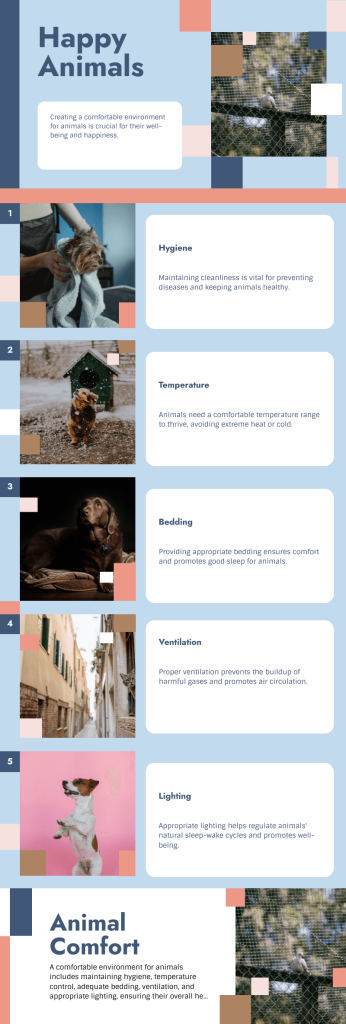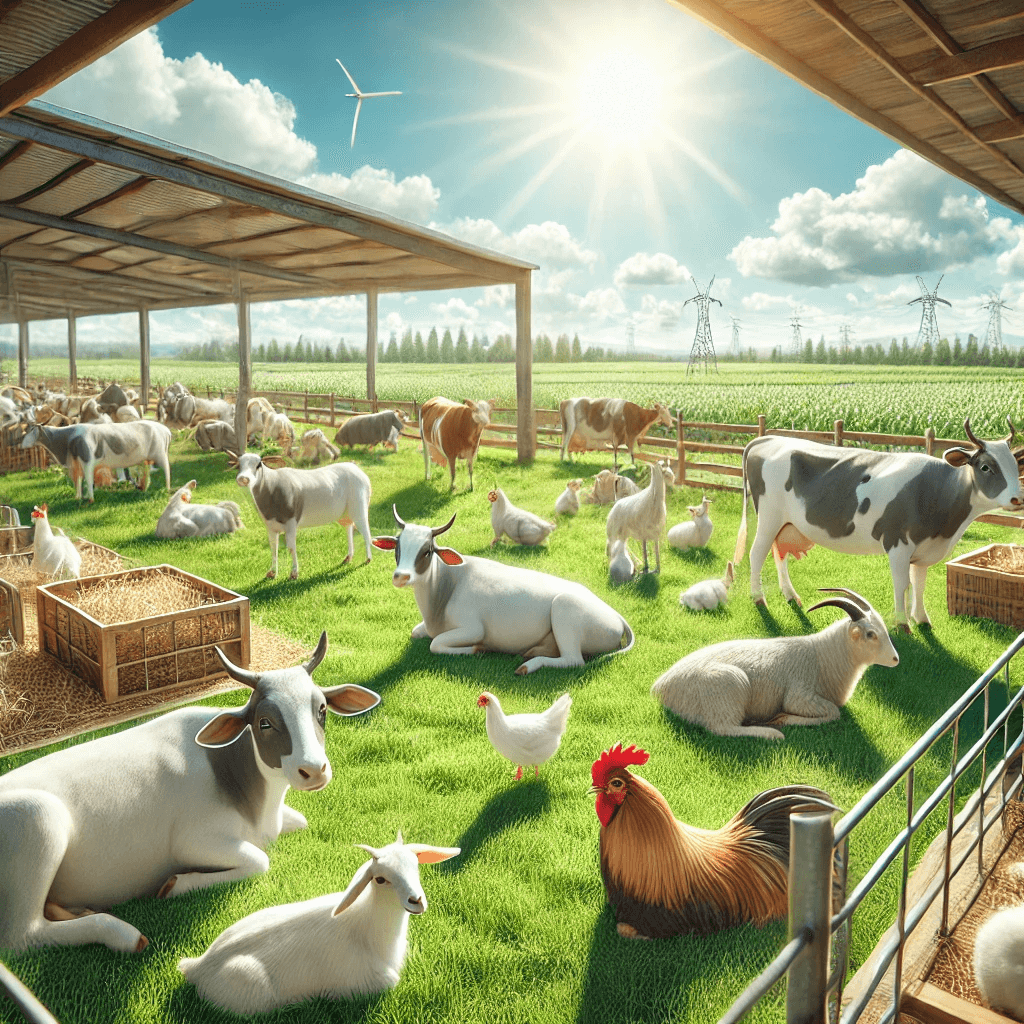Introduction
Creating a comfortable environment for your animals is essential for their well-being, productivity, and overall health. Whether you are raising livestock for farming purposes or caring for pets, providing an ideal living space ensures they thrive in a stress-free and supportive environment.

Factors to Consider
- Cleanliness
Maintaining a hygienic environment prevents diseases and ensures your animals are safe. Clean stalls, cages, and enclosures regularly to remove waste and debris. - Temperature Control
Animals are sensitive to extreme temperatures. Provide shade during summer and insulated shelters during winter to maintain a stable and comfortable temperature. - Proper Bedding
Use appropriate bedding materials such as straw, sawdust, or rubber mats to ensure comfort and reduce the risk of injuries or infections. - Ventilation
Proper airflow reduces the buildup of harmful gases and maintains air quality. Install fans, windows, or vents in enclosed spaces. - Lighting
Natural lighting supports the health of your animals, while artificial lighting can extend productivity for some species, such as poultry.

Best Practices for Maintaining Comfort
- Regularly monitor your animals’ behavior and health.
- Use non-toxic cleaning agents and insect repellents.
- Offer clean water and nutritious food consistently.
- Minimize noise and disturbances to reduce stress.
- Provide adequate space for each animal to move freely.

Benefits of a Comfortable Environment
A well-maintained living environment promotes better physical health, reduces stress, and improves productivity. Healthy and happy animals are more resistant to diseases and offer higher yields, whether in milk production, egg-laying, or other outputs.
Conclusion
Creating a comfortable environment for your animals is a critical aspect of responsible care and management. By addressing their basic needs and ensuring their living spaces are clean, safe, and supportive, you contribute to their well-being and long-term productivity.


Leave a Reply